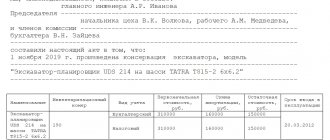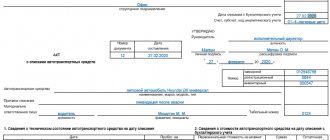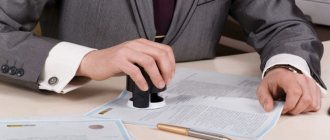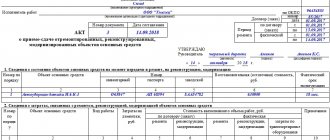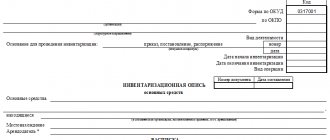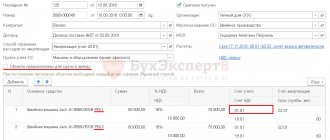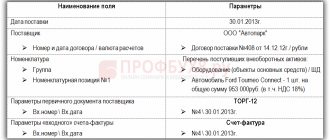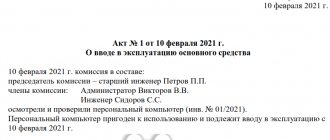In what cases can preservation be carried out?
Preservation is necessary when the main asset is temporarily not in use for various reasons.
Let's give examples. Seasonal work has ended, and therefore the equipment ceases to be used until the next season. For example, an organization uses snow removal equipment in winter. Since it is not used in the summer, conservation becomes important.
Temporary downtime at the enterprise. For example, an insufficient amount of raw materials was supplied to production. Until the raw materials are delivered in full, the operation of the equipment is suspended.
Due to lack of funds and economic inefficiency, cuts were made. For example, a workshop closed.
The OS broke down and was sent for repair.
If the useful life during the conservation period has expired
A similar procedure applies if, during the period of preservation of the OS, its useful life has expired.
Such clarifications were given by the Ministry of Finance in letters dated 08/18/2020 No. 03-03-06/1/72415, dated 07/02/2020 No. 03-03-07/57451, dated 04/01/2020 No. 03-03-06/1/25858.
He drew attention to the fact that the expiration of the useful life of a fixed asset during the period of its conservation does not affect the specified procedure for calculating depreciation.
Thus, after the OS is re-opened, its useful life is not extended.
The Ministry of Finance noted that the depreciation period is not a period equal to the useful life of the fixed asset (letter of the Ministry of Finance of Russia dated July 2, 2020 No. 03-03-07/57451).
Previously on the topic:
Conservation of fixed assets: why is it needed and how to arrange it
How to take into account depreciation after reactivation of an OS
Documentation of conservation
A prerequisite for recognizing conservation costs when calculating income tax is proper documentation.
The decision on conservation is formalized by order of the head of the organization. The order must indicate the conservation period and list the measures (for example, transportation) that need to be carried out to transfer the OS to conservation.
Then an inventory of fixed assets is carried out.
After the inventory, you need to draw up an act on transferring the OS to conservation. The act on the transfer of fixed assets for conservation is drawn up in any form, signed by the members of the commission and approved by the head of the organization. The act reflects the economic feasibility of mothballing a fixed asset object.
The act must indicate:
- OS transferred to conservation;
- date of transfer of the OS for conservation;
- conservation costs.
This act is the primary document for taking into account the costs of conservation in expenses and suspending the accrual of depreciation on fixed assets transferred to conservation for more than three months.
In accounting, an object transferred for conservation continues to be included in the operating system.
What is conservation of fixed assets
Temporary transfer of fixed assets for conservation implies a forced suspension of operation of the facility. In this case, it is automatically assumed that after some time the asset will begin to be used again. The economic meaning of this measure is that the enterprise gets the opportunity to maintain production capacity without losing extra funds.
Savings are also achieved due to the absence of depreciation charges in accounting: according to clause PBU 6/01, depreciation is suspended in accounting when the asset is mothballed for a period of more than 3 months. The same rule applies to tax accounting (clause 3 of Article 256 of the Tax Code). Depreciation stops accruing from the month following the month the object is transferred for conservation (clause 2 of Article 322 of the Tax Code of the Russian Federation), and is resumed from the month following the month of re-preservation. The mothballed OS continues to be listed in accounting - in a separate subaccount to account 01.
What are the reasons for mothballing fixed assets? As a rule, organizations are forced to resort to such measures in the case of seasonal work; when production is reduced or temporarily suspended; as a result of breakdown of machinery and equipment or during repair work. The company is not obliged to transfer operating assets to conservation (with the exception of strategic institutions), but has the right. Since conservation costs are allowed to be accepted as non-operating for tax accounting (subclause 9, clause 1, article 265 of the Tax Code of the Russian Federation) and as other costs for accounting (clause 4, 11 PBU 10/99), sometimes it is useful to transfer unused objects to conservation for a period of 3 months
Depreciation of fixed assets during the conservation period
For assets mothballed for three months or less, depreciation during the mothballing period is accrued in the usual manner.
For fixed assets mothballed for a period of more than three months from the first day of the month following the month of transfer to mothballing, depreciation is stopped.
The period during which the property is mothballed (even if it exceeds a three-month period) will not affect its useful life in relation to accounting.
After reactivation of objects, depreciation can be continued in the same manner until their cost is fully paid off.
Thus, from the first day of the month following the month in which the asset was re-mothballed, depreciation is resumed in the same amount as before mothballing.
Information that must be present in the document
The act must contain the following information:
- date of transfer of equipment for conservation;
- list of equipment that needs to be transferred;
- initial cost of equipment;
- reason for transfer;
- actions that were performed for the transfer;
- the amount of upcoming expenses;
- residual value if preservation is planned for more than three months;
- the amount of expenses already incurred;
- preservation period.
During inventory control, equipment that is intended for canning is allocated by the commission to a separate group. To account for it, the subaccount “Objects transferred for conservation” is used. Such equipment is registered in the act, indicating the manufacturer, model name and inventory number.
Accounting and reporting
If fixed assets are mothballed, the depreciation process will be suspended.
Since depreciation is calculated every month, in case of conservation, the depreciation process will be suspended starting from the new month. But if depreciation is calculated using the company's own method, then this is an exceptional situation. This means that depreciation will stop accruing the day after the objects are mothballed.
The original cost of objects that were mothballed, as well as the amount of accrued depreciation, are indicated in the general balance sheet. It is also necessary to additionally indicate information about the residual value of fixed assets that have undergone conservation.
To make it much easier to indicate this information, it is recommended to consider the original cost of the fixed asset and depreciation separately. In this way, additional accounts are created and you can get by with separate accounting. The cost of conservation and re-preservation costs, as well as the maintenance of objects that have undergone this procedure, must be taken into account differently, depending on the type of activity of the enterprise, objects, as well as the timing and reasons for this operation.
It is worth considering a specific case using the example of an enterprise that organizes leisure activities during a certain season. Such enterprises can be summer cafes, attractions, boat rentals or ski resorts, and so on. For such enterprises, the operation of preserving the OS is part of the activity or production technology.
The need for this operation and the reverse procedure must be foreseen in advance. It is obvious that these operations should be included in the cost of the goods or services provided.
In the case where conservation occurs due to the fact that the volume of production is reduced or a certain type of activity at the enterprise is temporarily stopped, this event can be considered within the framework of normal activities that will not be related to production as a whole. The costs of these operations must be reflected in accounting, just like others.
It is also worth noting that the conservation process may occur due to an emergency. Such situations may include a fire or natural disaster that caused severe damage to the warehouse. If we consider one of these scenarios, we can assume that the enterprise does not have the means to restore, but plans to do this in a year or two. Then conservation of funds will be appropriate and, perhaps, the only right decision. In this case, conservation costs are indicated as extraordinary.
[docs]
After the objects are re-opened, it is necessary to resume depreciation. To do this, an order is issued by the manager, and depreciation will begin to accrue from the new month. If there is a need to mothball fixed assets, you should remember the following:
- This procedure is carried out for three years.
- When preserving fixed assets, depreciation is not charged.
- This issue is approved by the head in the presence of the commission.
- It is necessary to conclude an act, which is proof of the procedure.
A tutorial on preserving and moving the OS in 1C Accounting is presented below.
about the author
Grigory Znayko Journalist, entrepreneur. I run my own business and know first-hand the problems and difficulties that individual entrepreneurs and LLCs face.
Liquidation
To determine the possibility of further use of the property, by decision of the company management, a commission is created, which includes persons responsible for the safety of the property, technical specialists, financial workers (clause 77 of Order of the Ministry of Finance 91n dated 10/13/03).
The commission is entrusted with the responsibility of inspecting the facility, making a decision on its liquidation, identifying the reasons for the impossibility of further operation and the persons responsible for this, as well as drawing up a decommissioning act. The write-off act can be developed by the organization independently, or one of the unified forms can be used: OS-4, OS-4a, OS-4b (Resolution of the State Statistics Committee of the Russian Federation 7 of 01.21.03). Based on the act, the object is written off from the register and a mark of disposal is placed on its inventory card.
The residual value of the written-off object is reflected in non-operating expenses in both accounting and tax accounting on the date of the write-off act. Also, non-operating expenses should reflect the costs of dismantling, removal and other actions related to the liquidation of the facility.
The components of the liquidated object, suitable for further use, are accounted for at the current market value, reflected in non-operating income.
Sample order for write-off of fixed assets
Order for inventory of fixed assets
Order for modernization of fixed assets
Order on conservation of fixed assets
Conservation of fixed assets in 1C: Enterprise Accounting ed. 3.0
Published 01.11.2021 10:30 Author: Administrator The accounting program automatically calculates depreciation of fixed assets (FPE) based on the established group, SPI and the selected method. In this publication we will look at how to formalize and document the transfer of an object for conservation in 1C.
The accrual of depreciation charges ceases only in cases of conservation for a period of more than three months, and during the period of restoration of the object (repair, modernization or reconstruction), lasting more than 12 months.
Conservation of fixed assets is the temporary non-use of an object with the possibility of renewal. It includes measures to ensure the safety and maintenance of property in good condition during the period of its downtime.
If it lasts more than three months, depreciation accrual stops, and after re-preservation it will continue.
We remind you that from January 2022 PBU 6/01 “Accounting for fixed assets”, approved. 03/30/2001 No. 26n.
At the same time, the FSBU “Fixed Assets” will come into effect, approved. By Order No. 204n dated September 17, 2020, according to it, OS facilities that are temporarily idle can be transferred to conservation. But now such property is not excluded from non-current assets and is accounted for separately. The calculation of depreciation is not suspended regardless of the preservation period.
In what cases is conservation carried out?
• Seasonal work has been stopped and the equipment is not used until the next season.
• Temporary downtime at the enterprise.
• production cuts were made, for example, a workshop was temporarily closed.
• the wasps were transferred to long-term repairs.
In any case, conservation is a right, not an obligation.
What is required to formalize conservation and re-conservation of objects
1. Conduct an inspection and determine a list of temporarily unused property and assess the economic feasibility of its conservation.
This can be entrusted to a permanent inventory commission and done as part of the inventory, or a special commission can be created.
2. Issue an order to transfer the object to conservation based on the results of consideration of the materials prepared by the commission.
It is drawn up in any form in which the following is indicated:
• reasons for temporary non-use of the OS;
• list of objects;
• date of transfer;
• term;
• persons responsible for the safety of OS during the period of their conservation.
The order might look like this:
3. Draw up an act on transferring the OS to conservation upon completion of the activities necessary to prepare the property for further storage (dismantling, packaging, transportation, disconnection of communications, etc.).
The form of the act is also free; it should reflect:
• accounting data on OS objects transferred for conservation;
• reason for conservation;
• term;
• information about the work performed and its cost;
• list of dismantled components of mothballed OS (if any);
• other necessary or important information (signatures of responsible persons, date of compilation, etc.).
Example of an act:
When re-mothballing fixed assets, an order for re-mothballing and an act for re-mothballing the fixed asset should be issued.
How to reflect conservation of fixed assets in accounting?
For these purposes, in the 1C program: Enterprise Accounting 8, ed. 3.0 is intended for the document “Changing the OS State”.
It is located in the section “Fixed assets and intangible assets”, block “Depreciation of fixed assets” - “Parameters of depreciation of fixed assets”.
We create a document with the type of operation “Changing the OS state”.
Fill out the document:
In the “OS Event” field, add a new event “OS Preservation” with the type “Other”.
Check the boxes as shown in the picture:
But the checkbox in the “Accrue depreciation (wear and tear)” field must be unchecked.
Then click the “Add” button to select the fixed assets that are transferred to conservation, then the “Post and close” button.
The document “Change of OS State” does not generate transactions.
Then we go to the section “Operations”, “Closing the month” , repost the documents and perform the operation “Depreciation and depreciation of fixed assets”.
Finally, we need to find out whether depreciation has stopped accruing.
Go to the “Reports” section, select the “Subconto Analysis” item.
A document field opens; we indicate the period for which the report should be generated, the type of subconto “Fixed Assets”.
Let's select the required OS object.
In the “Grouping” tab, specify the frequency “By months”.
Now let’s generate a report, and we see that starting from the next month, depreciation is no longer accrued.
At the same time, the object itself and its value continue to be listed on account 01 “Fixed Assets”.
How to reflect the reactivation of a fixed asset in accounting?
To remove fixed assets from conservation and continue to accrue depreciation, the document “Change in the state of fixed assets” is also used.
We draw up a new document and indicate the date from which the object will be reopened. The main point is to check the “Accrue depreciation (wear and tear)” checkbox.
Depreciation will begin to accrue from the next month.
How to reflect in accounting the costs associated with the conservation of fixed assets?
Recognizing the costs of conservation/re-preservation, maintenance of mothballed objects, in expenses for ordinary activities or in other expenses must be determined independently (clause 4 of PBU 10/99 “Expenses of the organization”).
The costs of repairing fixed assets for conservation are reflected in the same way as repairs of fixed assets that have not been taken out of service, depending on whether the repair is major or current.
Author of the article: Evgenia Tarasova
Did you like the article? Subscribe to the newsletter for new materials
Add a comment
JComments
